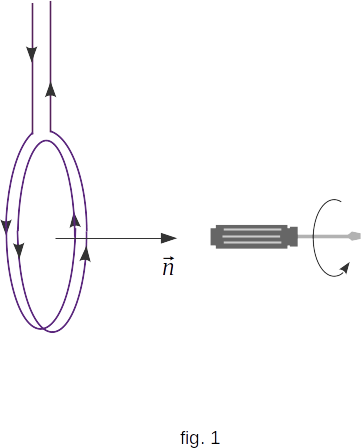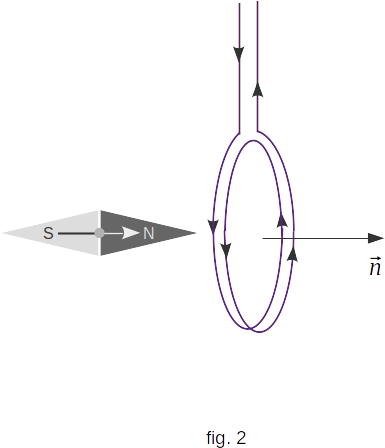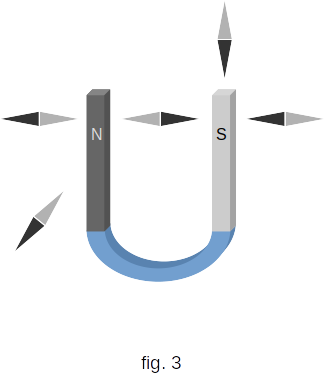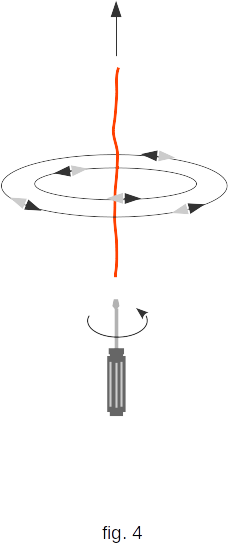From the Magnetic field of currents
122. Direction of magnetic field
The oriented effect of the magnetic field on the frame with electric current can be used to determine the direction of the magnetic field. The perpendicular direction to this frame is taken as the direction of the magnetic field where the small electric current frame is located, which can be freely oriented. Since the perpendicular to the plane of the frame can be drawn in both directions, then agreed for the direction of the perpendicular (normal) to take the direction in which will move the drill (right screw), if you rotate it in the direction of the electric current in the frame (fig. 1).

In this way, having a small frame with an electric current and allowing it to rotate freely in the magnetic field, you can determine the direction of the magnetic field at any point. To do this, just wait until the rotating frame calms down and apply the drilling rule.
In this way you can determine, for example, the direction of the magnetic field created by the Earth. However, to do this, you need to take a frame with a large number of coils or pass through the frame a fairly large electric current. As the magnetic field of the Earth is rather homogeneous the sizes of a frame can be large. In northern hemisphere the magnetic field is inclined to an earth surface from top to bottom, and in southern magnetic field is directed from bottom to top. Therefore, the frame should be able to rotate around the horizontal axis as well.
Let us make sure that the frame with the electric current behaves in the magnetic field in the same way as the magnetic arrow. The magnetic arrow is a small straight-line permanent magnet with two poles S and N at the ends. Let the arrow navigate freely. We will see then that the direction of the line drawn through the center of the arrow from S to N (fig. 2) coincides with the direction of normal \(~ \overrightarrow{n}\) to the frame. But the direction of this normal, associated with the right screw rule with the direction of electric current in the frame, we took as the direction of the magnetic field. Therefore, the direction from S to N of the freely setting arrow can be taken as the direction of the magnetic field.

Using the magnetic arrow, it is possible to repeat all the experiments that were carried out with the frame (fig. 3). Experiments in determining the direction of the Earth's magnetic field are carried out by anyone who orients himself on the land by compass. If the arrow can be rotated around a horizontal axis, it will be inclined in the Earth's magnetic field.

In the magnetic field of a straight-line conductor with an electric current, the magnetic arrow is tangential to the circle (fig. 4). The plane of the circle is perpendicular to the wire, and the center lies on the axis of the wire. The direction of the magnetic current field can be set using a drill rule.To do so, the screw must move in the direction of the electric current. The flat surface of the screw head will then move in the direction assumed by the magnetic field direction.

Other fields, such as the magnetic field of a coil with an electric current, can also be investigated by using arrows (or frames with electric current).
The magnetic arrow and the electric current frame (circuit) do not behave in the same way accidentally. The point is that the magnetic properties of the arrow, as well as any permanent magnet, is a physical phenomenon that occurs when there are moving electric charges inside the substance, forming elementary closed currents. The arrow is the same circuit, or, more precisely, a set of many circuits (for more details see Chapter XIII, Magnetic properties of the substance).